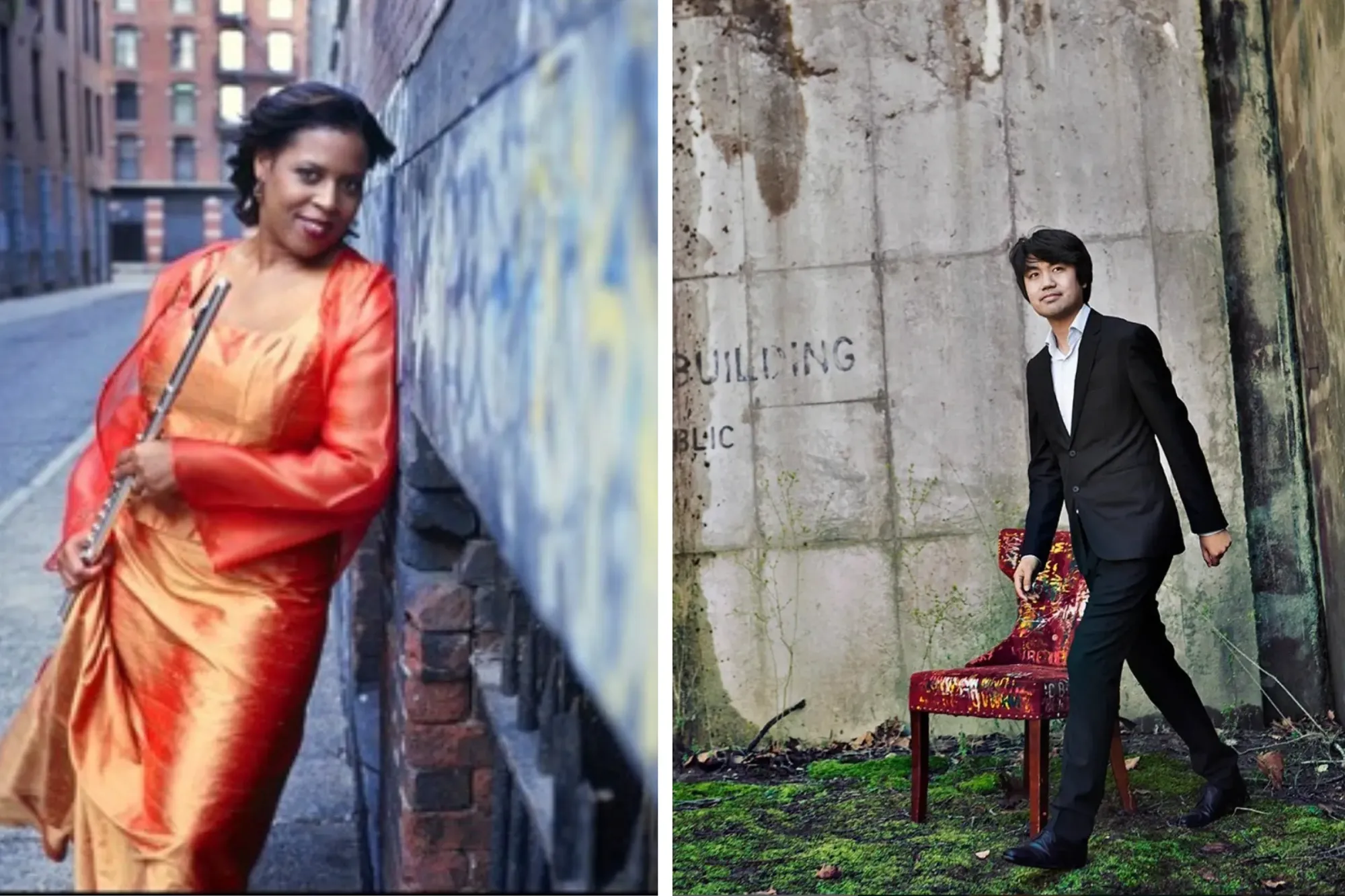Tulsa Symphony Orchestra: Coleman, Ravel, and Tchaikovsky
Tulsa Performing Arts Center
Tulsa
Sept. 14, 2024
I first heard the Tulsa Symphony Orchestra at the final concert of their 2023 – 2024 season, where they knocked the Mahler Fifth out of the park, surprising this Tulsa newcomer with their power, vivacity and nuance.
My date that evening — you may remember him as Mr. Outdoors, but let’s call him Mr. Tulsa from this point forward — was also blown away. He’s a classical noob, so before we go to concerts I send him links to the pieces we’ll hear and give him a mini-lecture on their form, historical relevance and any Easter eggs to listen for. Finally, that music history degree is paying off!
I had a busy week and forgot to prep Mr. Tulsa before last Saturday’s TSO concert (its season opener, featuring works by Valerie Coleman, Maurice Ravel, and Tchaikovsky), but thankfully the dapper conductor, David Lockington, gave us a little introduction to the music before the downbeat. The Coleman, a contemporary piece called Umoja: Anthem of Unity, reflects the first principle of Kwanzaa. The Ravel piano concerto in G major, classical in form, was written to show the whimsy and quirkiness Ravel had missed out on during his composition of Bolero. And the Tchaikovsky Fifth Symphony needed little explanation, except that it was written between the fourth and sixth symphonies. Handsome and funny, our conductor.
I loved the Coleman, with its lush harmonies and surging rhythms. The gentle violin solo was exquisite, and there was some excellent piccolo work by Dana Higbee. The piece was cinematic in scope; I’d love to see Coleman compose some film music.
The first movement of the Ravel made me almost giggle with its humor. The harp solo was like a dream sequence, and the rest of it reflected the Jazz Age during which the concerto was composed. The second movement, in a slow three, featured some divine woodwind solos, especially Kristin Weber’s English horn bit, which touched me so deeply I put aside the regret I still feel over that thing that happened back in ‘86. The third movement was all blocky harmonies and punchy rhythms, and it was delightful to see the trombone player, after having waited patiently, get to do some excellent sliding — up, down, sideways. Tasteful, appropriate sliding, never gratuitous. Well done, Mr. Carrillo.
When the lights went up at intermission, I turned to Mr. Tulsa to see how he’d enjoyed it. His face was stony.
“I don’t get it,” he said.
“Didn’t get what?” I asked, confused.
“That Ravel,” he spat. “It didn’t make any sense. It was like the conductor pointed to one section and said do something, and then he pointed to another soloist and said do something different, and that went on forever. I was lost.”
“But didn’t you like the pianist?” Sean Chen is a prize-winning artist, and did a remarkable job.
Mr. Tulsa shrugged. “Same. Just one damn thing after another.”
“Did you like anything about it?”
He thought. “I liked the way the concertmaster plucked on that one part. Very authoritative plucking.”
Well, that was something. I switched tactics. “How about the Coleman?”
His face brightened. “I loved it! I heard where one section finished and another started, so I was never lost. I liked how the xylophone did that thing with the strings on his keys. It felt familiar and new at the same time. And with what the conductor said beforehand, I got the cultural significance of it!”
The lights dimmed, and the TSO played the heck out of the Tchaikovsky. (Sadly, the house was only about half full. Tulsa, you’ve got to stop missing these shows.) There were some swoon-worthy French horn solos by Rebekah Lorenz and the clarinets seemed like they had waited their entire careers to deliver these melodies to us. The strings were beautifully in sync, the brass was formidable, the woodwinds lovely.
Mr. Tulsa was still mad about the Ravel the next day, so he listened to a recording of it to see if it fared better on a second listening. It did, he said. It was “palatable.”
I’ll take it. Any art that arouses enough emotion to make you give it a second try has been truly provocative. I’d call the evening a win.





